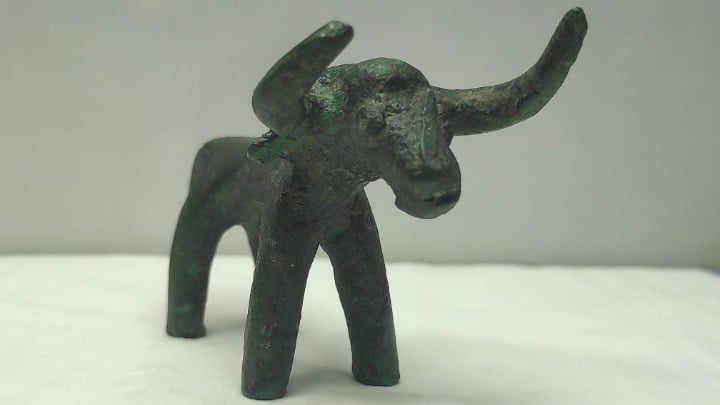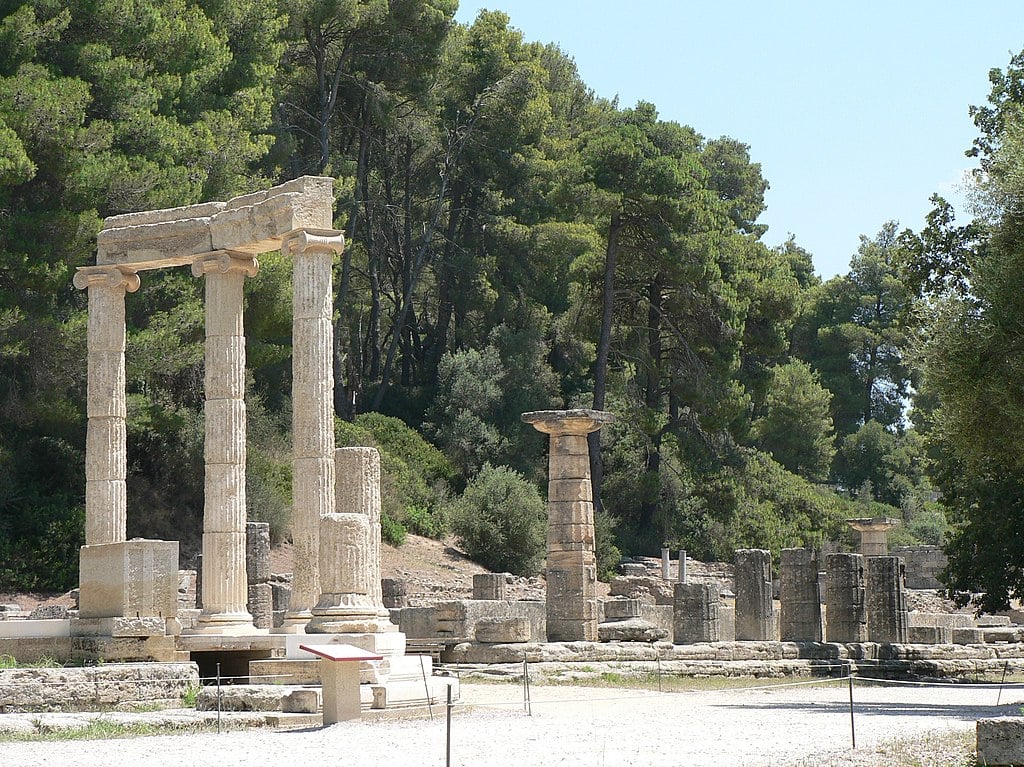
An archaeologist recently stumbled upon a small bronze figurine of a bull at ancient Olympia during a routine inspection at the site.
Not expecting to make any large discoveries, the group of scientists and archaeologists from Greece’s Culture Ministry were in the middle of surveying the site after a series of rainstorms hit the area.
Amazingly, archaeologist Zaharoula Leventouri spotted a tiny horn jutting out from the moist soil near the temple of Zeus during the inspection, and stopped to carefully remove the soil from the area.
Leventouri eventually uncovered a tiny bronze bull, which, after further examination, was dated back to Greece’s Geometric period, which was from 1000 BC to 700 BC.
Bronze bull figurine may have been part of sacrifice at ancient Olympia
Archaeologists have found scores of fine pottery featuring distinctive geometric patterns from the period, but bronze figurines from the era are not as commonly found, as Greeks later melted down many bronze sculptures to reuse the material over the centuries.
The bronze bull was sent for further examination by experts at the Greek Ministry of Culture, who later determined that it had most likely been a gift dedicated to Zeus at his temple at the ancient site of Olympia.
Bulls and horses were fundamental to life in ancient Greece during the period, which makes it no surprise that archaeologists have found other small bronze figurines depicting the animals near other temples and in burial sites around Greece.
Specialists also analyzed a soil sample taken from the spot where the bull was found, and discovered that the figure was likely part of a sacrifice, as there was strong evidence of burnt sediment and other charred material in the sample.

Ancient Olympia — the religious and athletic center of the Greek world
Located in the Peloponnese, Olympia was a major center of not only religious life in ancient Greece but also of sport, as it was of course the home of the original Olympic Games.
The religious significance of the site served as a unifying force for Greece’s many disjointed regions, as people from across the country gathered there to worship the gods, and later compete in athletic competitions in the form of the Olympic Games, which ran every four years from the 8th century BC to the 4th century AD.
The remains of as many as 70 buildings are located at the site, including two significant temples, one dedicated to Hera, built approximately 590 BC, and the other to Zeus, which dates to the 4th century BC.
The temple to Zeus was constructed atop the ruins of a much older religious site at Olympia that dates from the ninth or tenth centuries BC.
The Temple to Zeus at Olympia once housed the famed “Statue of Zeus” sculpted by Phideias in 435 BC, which is lost to history.
The chryselephantine, or gold and ivory, depiction of the god rose an imposing 41 feet into the air, and was considered one of the wonders of the world before it was mysteriously destroyed in the 5th century AD.
Watch the painstaking conservation of the bull figurine below:
See all the latest news from Greece and the world at Greekreporter.com. Contact our newsroom to report an update or send your story, photos and videos. Follow GR on Google News and subscribe here to our daily email!



